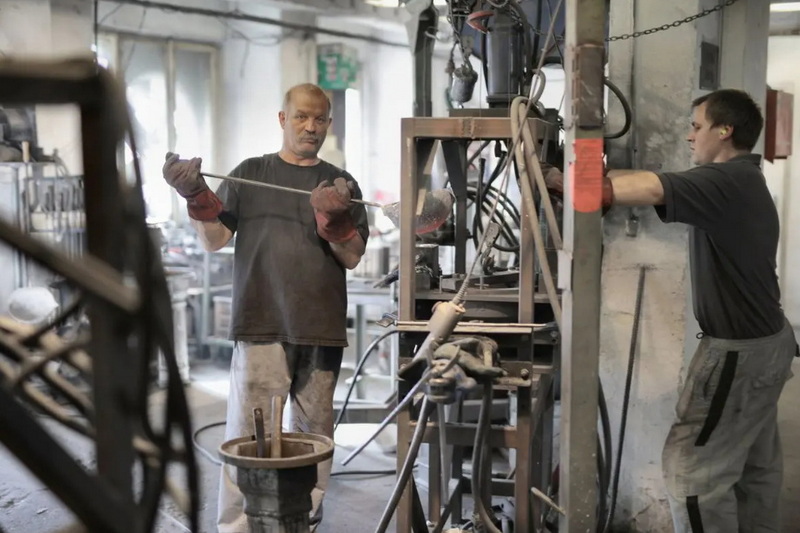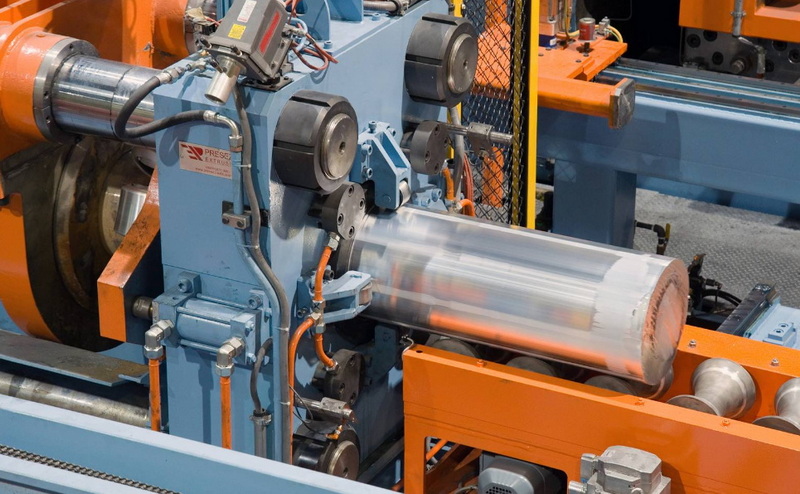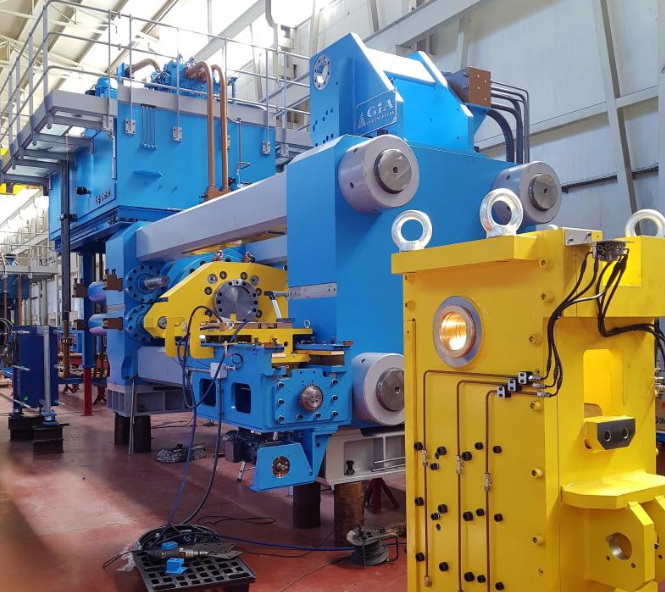Content Menu
● Introduction to Downstream Equipment
>> Cooling Systems
>> Pullers
>> Cutters
>> Winders
● Applications of Downstream Equipment
>> Plastic Extrusion
>> Metal Extrusion
>> Rubber Extrusion
● Benefits of Downstream Equipment
● Customization of Downstream Equipment
>> Cooling Systems Customization
>> Pullers Customization
>> Cutters Customization
>> Winders Customization
● How to Ensure Accuracy and Reliability
>> Calibration Tanks
>> Real-Time Monitoring
● Advanced Technologies in Downstream Equipment
>> Automation and AI
>> IoT and Predictive Maintenance
● Challenges and Future Developments
>> Sustainability
>> Energy Efficiency
>> Regulatory Compliance
● Conclusion
● FAQ
>> 1. What is downstream equipment in extrusion?
>> 2. How does downstream equipment improve product quality?
>> 3. What are the benefits of customizing downstream equipment?
>> 4. How often should downstream equipment be maintained?
>> 5. What industries use downstream equipment for extrusion?
Downstream equipment for extrusion plays a crucial role in enhancing the efficiency and quality of post-extrusion handling. This equipment is used after the initial extrusion process to shape, cool, and finalize the extruded product. In this article, we will explore how downstream equipment can improve post-extrusion handling, including its applications, types, and benefits.

Introduction to Downstream Equipment
Downstream equipment for extrusion includes a variety of machines designed to handle the extruded material after it leaves the extruder. These machines are essential for ensuring that the final product meets the required specifications in terms of size, shape, surface quality, and performance. The main components of downstream equipment include cooling systems, pullers, cutters, and winders.
Cooling Systems
Cooling systems are used to solidify and stabilize the extruded material. They can be in the form of water baths, air cooling systems, or chilled rollers. These systems help maintain the desired shape and properties of the extruded product. For instance, in plastic extrusion, cooling systems are critical for preventing deformation and ensuring that the product retains its intended dimensions.
Pullers
Pullers are devices that draw the extruded material through the production line at a controlled speed. They ensure consistent dimensions and maintain tension on the product. Common types of pullers include belt pullers, caterpillar pullers, and roller pullers. Each type is suited for different materials and applications, providing flexibility in production.
Cutters
Cutters are used to separate the continuous extruded product into desired lengths. They come in various forms, such as rotary cutters, flying knife cutters, and saws. The choice of cutter depends on the material's hardness and the precision required for the cut.
Winders
Winders collect the final product in rolls or spools for storage and transportation. They are particularly important for flexible products like films and cables. Winders can be customized to handle different roll sizes and material types, ensuring efficient packaging and logistics.
Applications of Downstream Equipment
Downstream equipment for extrusion is used in various industries, including plastic, metal, and rubber manufacturing. It is essential for producing pipes, profiles, films, and other extruded products.
Plastic Extrusion
In plastic extrusion, downstream equipment helps maintain the shape and dimensions of extruded products. Cooling tanks, pullers, cutters, and winders ensure uniformity and quality. For example, in the production of PVC pipes, precise cooling and pulling are necessary to achieve the required strength and durability.
Metal Extrusion
For metal extrusion, downstream equipment is used for cooling, cutting, and finishing aluminum profiles. This includes coating, stretching, and surface finishing. Metal extrusion products often require specialized cooling systems to prevent oxidation and maintain surface quality.
Rubber Extrusion
Rubber extrusion products require specialized downstream equipment for finishing, such as salt tanks or infrared ovens. These systems help cure the rubber, enhancing its elasticity and durability.

Benefits of Downstream Equipment
The use of downstream equipment for extrusion offers several benefits:
- Improved Quality: Ensures that the final product meets precise specifications.
- Increased Efficiency: Automates processes, reducing manual labor and increasing production speed.
- Customization: Allows for tailored solutions to meet specific product requirements.
- Cost Savings: Reduces material waste and extends equipment lifespan.
Customization of Downstream Equipment
Customizing downstream equipment is crucial for optimizing the extrusion process. Manufacturers work closely with customers to design equipment that meets specific needs, such as adjusting cooling rates, puller speeds, and cutter types.
Cooling Systems Customization
Cooling systems can be customized by adjusting coolant flow rates to suit different polymer thicknesses. This ensures that the product cools uniformly, preventing defects like warping or cracking.
Pullers Customization
Puller speeds can be adjusted to maintain uniform product dimensions across varying extrusion line speeds. This flexibility is essential for handling different materials and maintaining consistent quality.
Cutters Customization
Cutters can be customized with interchangeable blades and adjustable cutting lengths to ensure precise cuts. This is particularly important for products that require specific lengths or patterns.
Winders Customization
Winders can be adjusted for tension control and roll diameter settings based on the material type and required length. This customization ensures that the final product is properly packaged and ready for distribution.
How to Ensure Accuracy and Reliability
To ensure accuracy and reliability in downstream equipment, regular maintenance, calibration, and real-time monitoring are essential. This includes using advanced measuring devices and implementing predictive maintenance strategies.
Calibration Tanks
Calibration tanks are used to stabilize the extruded product's shape and size. They employ vacuum systems to press the material against molds, ensuring precise dimensions. Regular calibration is necessary to maintain these precise specifications.
Real-Time Monitoring
Real-time monitoring involves using sensors and internet-based devices to track equipment performance. This allows for early detection of issues and predictive servicing, reducing downtime and improving overall efficiency.
Advanced Technologies in Downstream Equipment
Recent advancements in technology have significantly enhanced the capabilities of downstream equipment. For example, the integration of automation and AI allows for more precise control over production processes. Additionally, the use of IoT devices enables real-time monitoring and predictive maintenance, further improving efficiency and reducing costs.
Automation and AI
Automation and AI technologies enable downstream equipment to operate with higher precision and speed. Automated systems can adjust parameters in real-time based on feedback from sensors, ensuring consistent product quality.
IoT and Predictive Maintenance
IoT devices connected to downstream equipment provide real-time data on performance and potential issues. This data is used for predictive maintenance, allowing manufacturers to address problems before they cause downtime.
Challenges and Future Developments
Despite the advancements in downstream equipment, there are challenges that manufacturers face. These include the need for increased sustainability, reduced energy consumption, and compliance with evolving regulatory standards. Future developments are likely to focus on these areas, incorporating more eco-friendly materials and processes.
Sustainability
Manufacturers are increasingly focusing on sustainability by using recycled materials and reducing waste. Downstream equipment can be optimized to handle recycled materials efficiently, contributing to a more circular economy.
Energy Efficiency
Improving energy efficiency is another key challenge. Downstream equipment can be designed to consume less energy while maintaining productivity. This includes using advanced cooling systems that reduce energy consumption without compromising product quality.
Regulatory Compliance
Compliance with regulatory standards is crucial for ensuring product safety and environmental responsibility. Downstream equipment must be designed to meet these standards, which often involve specific material handling and waste management practices.
Conclusion
Downstream equipment for extrusion is vital for enhancing post-extrusion handling by ensuring that extruded products meet precise specifications and quality standards. By customizing and maintaining these systems, manufacturers can improve efficiency, reduce costs, and increase product quality. As technology continues to evolve, downstream equipment will play an increasingly important role in meeting the demands of a rapidly changing industry.

FAQ
1. What is downstream equipment in extrusion?
Downstream equipment in extrusion refers to machines used after the extrusion process to shape, cool, and finalize the extruded product. This includes cooling systems, pullers, cutters, and winders.
2. How does downstream equipment improve product quality?
Downstream equipment improves product quality by ensuring precise dimensions, maintaining material properties, and automating processes to reduce human error.
3. What are the benefits of customizing downstream equipment?
Customizing downstream equipment allows for tailored solutions that meet specific product requirements, reduce material waste, and extend equipment lifespan.
4. How often should downstream equipment be maintained?
Downstream equipment should be maintained regularly to prevent breakdowns and ensure consistent performance. This includes routine checks and predictive maintenance strategies.
5. What industries use downstream equipment for extrusion?
Downstream equipment is used in various industries, including plastic, metal, rubber, and composite manufacturing, across applications such as pipes, profiles, films, and cables.






















